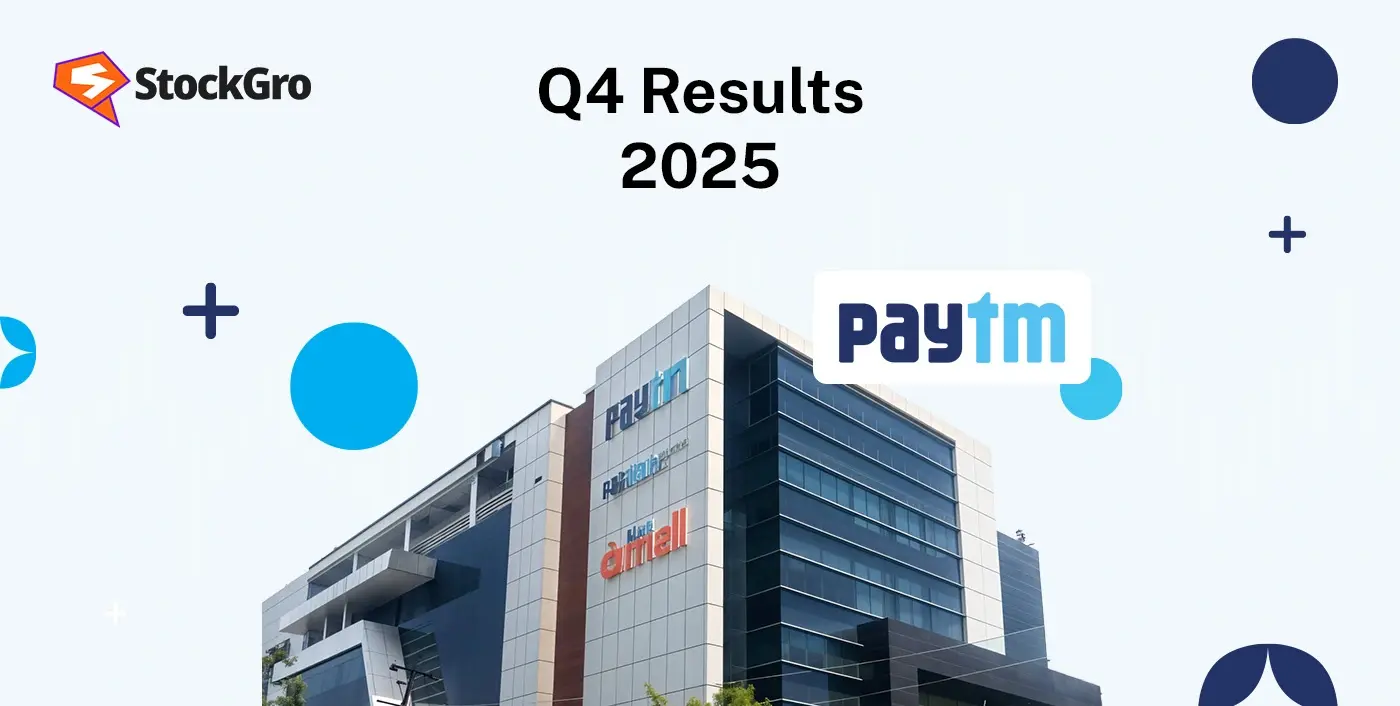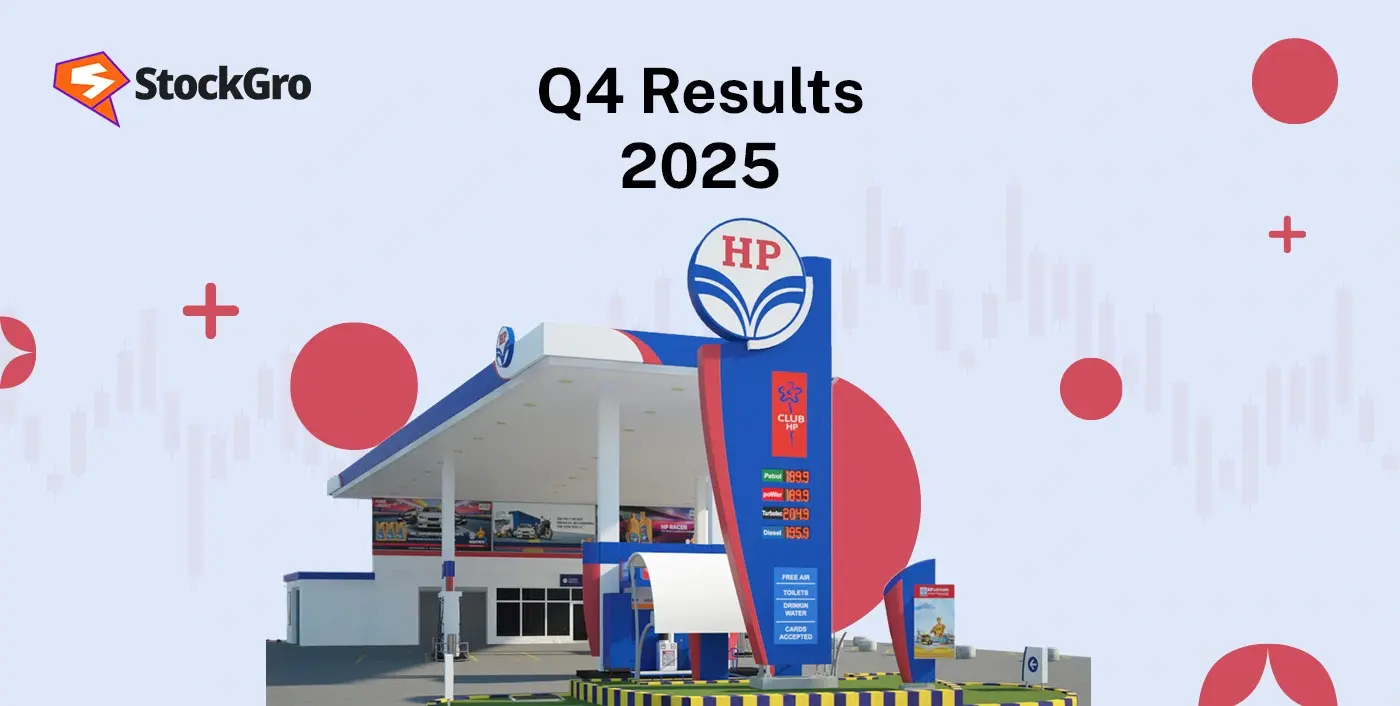
Shares of One97 Communications, the parent company of Paytm, surged by nearly 7% following the release of its Q4 FY25 results. Despite reporting a consolidated loss for the quarter, investor sentiment remained positive, indicating growing confidence in the company’s future.
Paytm’s financial results
In Q4 FY25, Paytm posted a consolidated loss of ₹545 Cr, which was an improvement compared to ₹550 Cr in the same quarter last year. A significant factor contributing to the loss was the notional expense of ₹522 Cr linked to the Employee Stock Ownership Plan (ESOP).
This expense included ₹492 Cr related to the ESOP and ₹30 Cr due to impairments after Vijay Shekhar Sharma, Paytm’s CEO, voluntarily returned 2.1 Cr shares he received as part of the plan.
Also read: HPCL Q4 result analysis
Key financial figures for Q4 FY25
| Metric | Q4 FY25 | Q4 FY24 | Change (%) |
| Revenue from operations | ₹1,911 Cr | ₹2,267 Cr | -15.70% |
| Net loss | ₹540 Cr | ₹550 Cr | -1.80% |
| Exceptional items (ESOP expense) | ₹522 Cr | ₹492 Cr | 6.10% |
| Loss excluding exceptional items | ₹23 Cr | ₹58 Cr | -60.30% |
| GMV (Gross Merchandise Value) | ₹5.1 lakh Cr | ₹4.3 lakh Cr | 18.60% |
| Monthly transacting users | 72 million | 96 million | -25% |
Despite the decline in revenue, Paytm’s financial services business showed strong growth, with revenues climbing 9% quarter-on-quarter (QoQ) to ₹545 Cr. Additionally, the company’s merchant loan distribution grew significantly, reaching ₹4,315 Cr. Over half of the loans were disbursed to repeat borrowers, indicating the success of Paytm’s strategy in building a loyal customer base.
You may also read: YES Bank Gains on SMBC Stake Talks, Slips from Highs
Business performance and outlook
Financial services growth: Financial services revenue increased by 9% quarter-on-quarter to ₹545 crore, driven by growth in merchant loans and higher trail income from the digital lending group portfolio. The company disbursed ₹4,315 crore in merchant loans during the quarter, with over half the loans going to repeat borrowers. To date, one million merchants have availed of loans via the platform.
Gross merchandise value (GMV): GMV for the quarter stood at ₹5.1 lakh crore, up 19% year-on-year, indicating a strong growth trajectory in the company’s transaction volumes.
Cost management: Employee expenses decreased by 32% to ₹748 crore, attributed to AI-driven efficiencies in non-sales functions. Payment processing charges reduced by 27% to ₹52 crore, contributing to overall cost savings.
Full-year performance: For the full financial year ending March 31, 2025, One97 Communications reported a consolidated revenue of ₹6,900 crore, a 31% decrease from ₹9,978 crore in FY24. The company’s net loss for FY25 narrowed to ₹658.7 crore, compared to ₹1,417 crore in FY24, reflecting improved financial performance.
You may also like: Meghna Infracon Q4 business update
Analyst outlook: What analysts are saying
Analysts have a mixed outlook on Paytm’s future. Some are optimistic about the company’s growth prospects, while others remain cautious due to the ongoing losses. Here’s a summary of key brokerage insights:
| Brokerage | Rating | Target Price |
| Motilal Oswal Financial | Neutral | ₹870 |
| JM Financial | Buy | ₹1,070 |
- Motilal Oswal Financial Services maintains a neutral rating, projecting a target price of ₹870 based on 18x FY30E EBITDA discounted to FY26E. They estimate Paytm will become EBITDA positive by FY27.
- JM Financial is more optimistic, with a buy recommendation and a target price of ₹1,070, up from ₹1,000 previously. The brokerage expects Adjusted EBITDA profitability to be achieved in the near future.
Paytm share performance:
In the past year, Paytm shares have surged by 143%, vastly outperforming the Sensex, which rose by 9.6%. Although the stock has faced volatility, the current price of ₹864 is still 175% higher than its 52-week low of ₹310.
You may also read: Mahindra & Mahindra Q4 highlights
Paytm’s future growth potential
While Paytm’s revenue for Q4 FY25 showed a decline, its merchant loan distribution and financial services revenue continue to grow, indicating positive momentum in core business areas. Paytm’s focus on diversifying its business beyond payment processing into lending services could be a key driver for future profitability.
What’s next for Paytm?
Despite the loss reported for Q4 FY25, Paytm is on track for a path to profitability. The company’s financial services and merchant loans remain strong points for future growth. As Paytm continues to refine its offerings and improve its profit margins, it may be able to turn things around and see consistent growth in the coming quarters.
You may also like: Kotak Bank shares fall after Q4 results
Conclusion
Despite the challenges presented in Q4 FY25, Paytm’s share price has shown resilience, posting a 7% jump following the results. The company’s financial services and merchant loan distribution segments are growing, and analysts are hopeful about its long-term prospects. The recovery in GMV and the narrowing of consolidated losses are key signs of future stability.
Looking ahead, Paytm is focusing on strengthening its core business, improving margins, and working towards EBITDA profitability by FY27. While Paytm’s share price remains volatile, the recent uptick is a positive sign, indicating that the market is betting on the company’s ability to grow and innovate in the fintech space.

